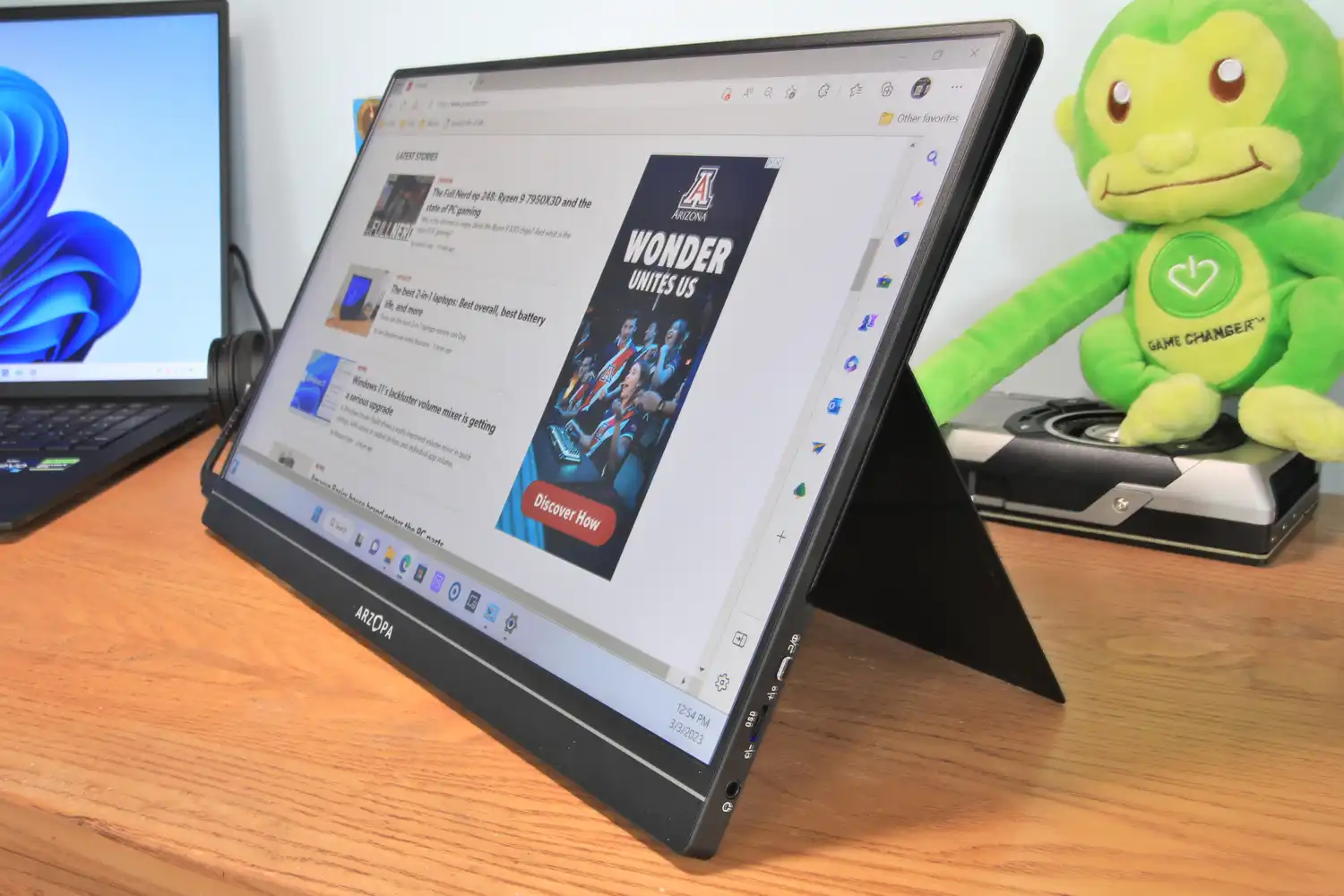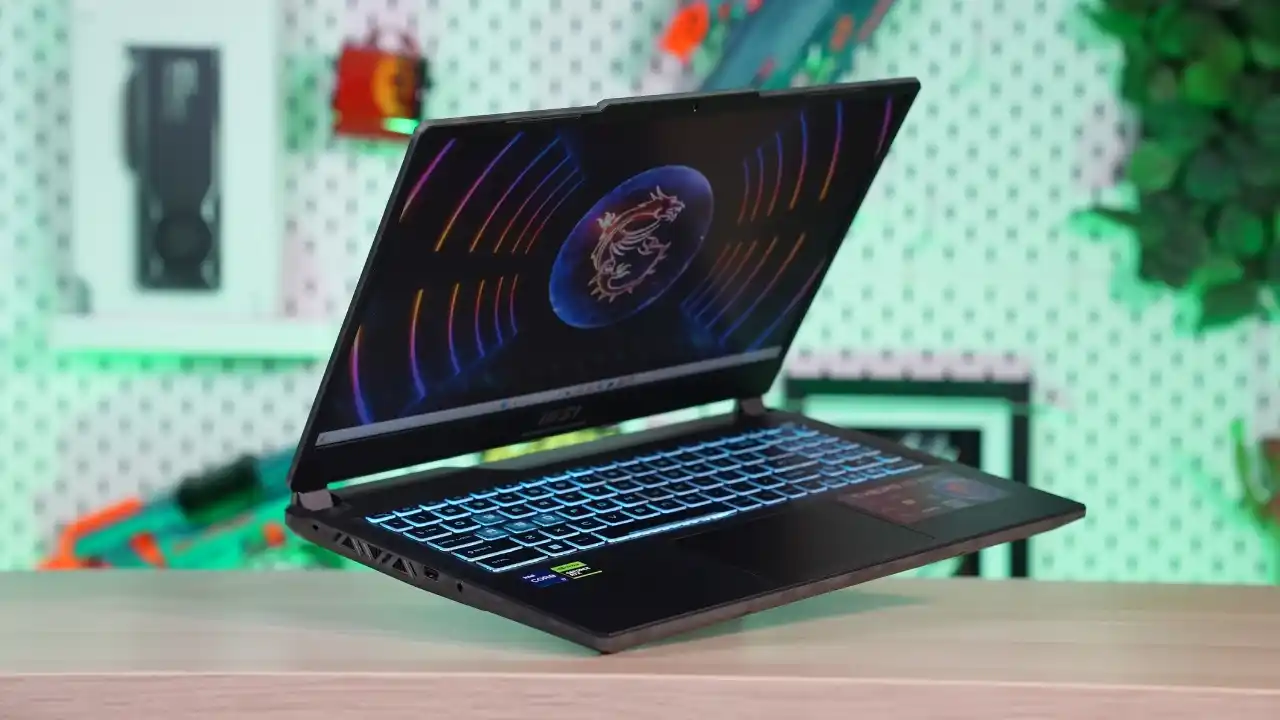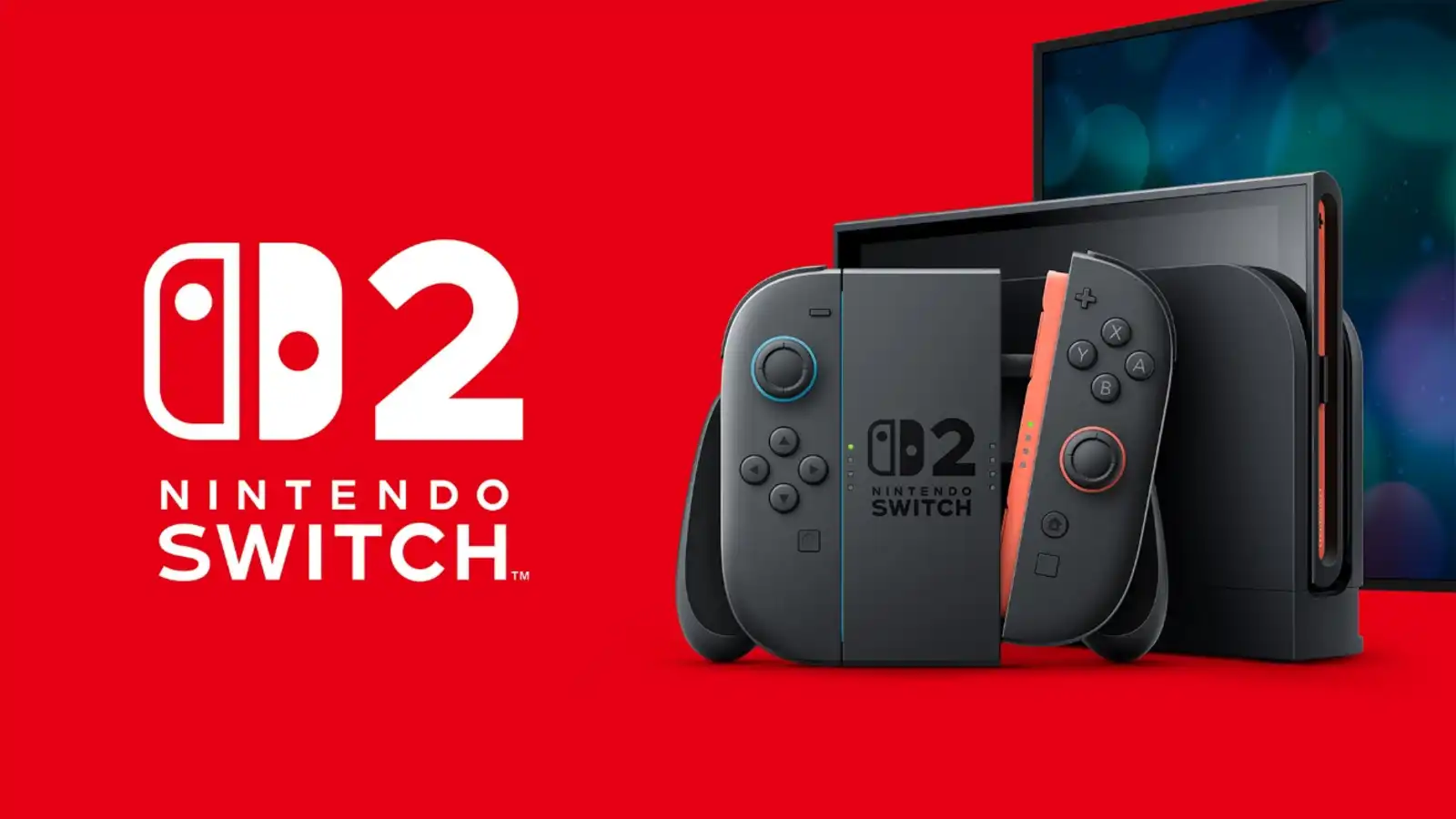Light, compact monitors make it easy to move your workspace.
Portable monitors are fast becoming a common sight with both desktops setups and laptops. Though typically smaller than a standard monitor, portable monitors are inexpensive, easy to connect and, best of all, portable. The ability to pack up and move a portable monitor when needed is something that’s equally useful for students, people who work from home, or globe-trotting executives.
The only issue is that the portable monitor market is a bit of a mess currently. The widespread availability of these displays and the ability to manufacture them cheaply has opened the floodgates for numerous unknown brands to flood the market. Many of these brands don’t have any established credibility, and quality can often be sub-par. That’s where we at PCWorld come in. We’ve tested multiple models to separate the best portable monitors from the rest. Below you’ll find a curated list of our favorites plus additional info about what to look for when shopping on your own.
Arzopa A1 Gamut – Best budget portable monitor
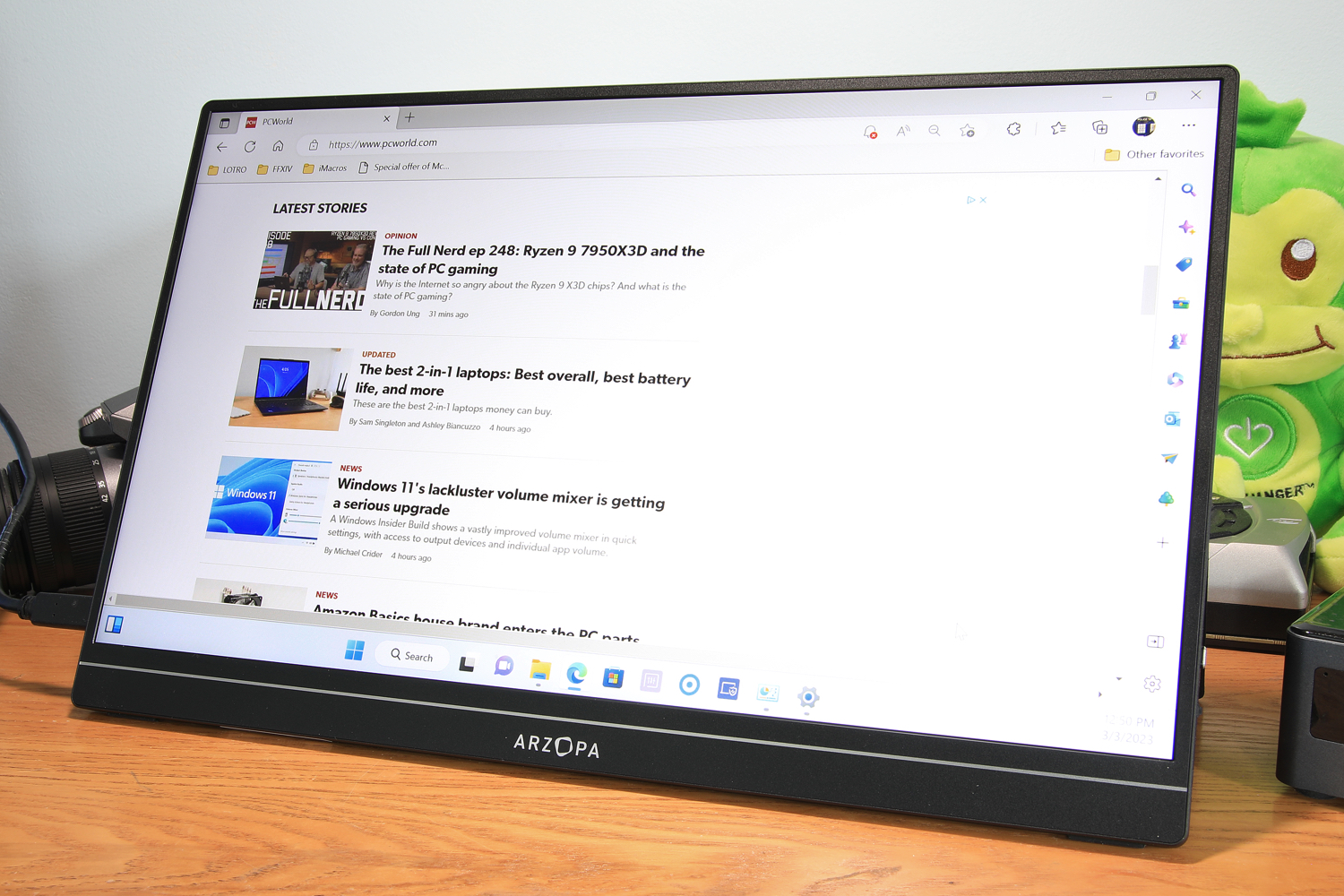
Pros
- Good build quality for the price
- Bright, attractive display
- Two USB-C inputs, plus mini-HDMI
- All cables included
Cons
- Stand only adjusts for tilt
- Limited image quality adjustments
- Mediocre contrast ratio
The Arzopa A1 Gamut is a solid 15.6-inch 1080p portable monitor that delivers good image quality, an attractive design, and useful features at a low price.
Arzopa opts for a simple yet elegant design that pairs a thin display panel with a small bump on the lower half to house the monitor’s ports and internal electronics. A faux-leather cover is included to provide protection when stowed. It also folds into a kickstand when the monitor is in use.
The monitor has three input options: two USB-C with DisplayPort Alternate Mode and one Mini-HDMI. All required cables and accessories are included. However, the monitor’s menu system is hard to use and offers few adjustments.
Image quality is great for the price. The Azorpa A1 Gamut reaches a maximum brightness of 297 nits, which is brighter than many competitors. The color gamut spans 97 percent of sRGB and 74 percent of DCI-P3. The A1 Gamut appears bright and vivid in day-to-day use and, though not ideal for professional content creation, holds up well while browsing the web, working in Microsoft Office, or viewing YouTube.
The Arzopa A1 Gamut retails for $170 but is frequently sold at a steep discount, often as low as $110. It’s an absolute steal when on sale, and we highly recommend waiting for a discount if one isn’t currently available.
Read our full Arzopa A1 Gamut review
Innocn 15A1F – Best OLED portable monitor
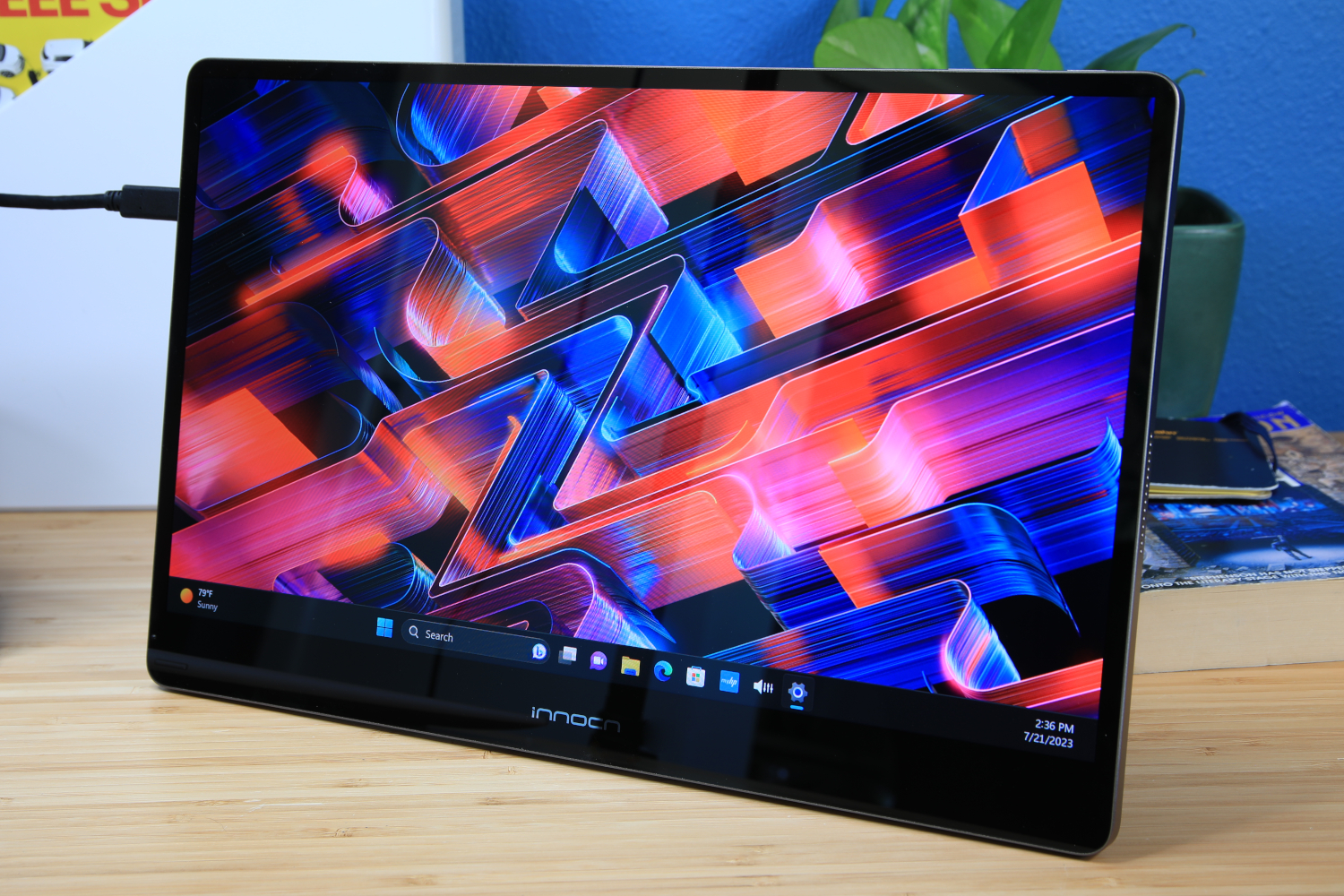
Pros
- Excellent image quality
- Durable and attractive design
- Versatile clip-on stand
- Unbeatable bang-for-the-buck
Cons
- Doesn’t include a protective case
- HDR is supported but disappointing
The Innocn 15A1F is an OLED portable monitor that brings excellent image quality and attractive design to a more affordable price point.
It has a 15.6-inch OLED panel with a resolution of 1920×1080 and a 60Hz refresh rate. Its design, reminiscent of the Apple iPad Pro, elegantly combines an aluminum rear panel with edge-to-edge glass.
It also has a unique, versatile clip-on stand that adds stability and a wide range of tilt adjustments. Innocn doesn’t include a protective case, however, so shoppers should consider a third-party protective sleeve.
Image quality is where this portable monitor stands out. It delivers a maximum brightness of 378 nits and achieves an infinite contrast ratio. This combination provides a bright, vivid, and immersive image. It also delivers an impressive 100 percent of the DCI-P3 color gamut and 94 percent of AdobeRGB. That’s more than adequate for photo and video editing. The monitor’s 60Hz refresh rate might be a limitation for gamers, however.
Priced at an MSRP of $349.99, which often drops to a tempting $199.99 on Amazon, the Innocn 15A1F is an excellent choice if you want a portable monitor with top-tier image quality on a budget.
Arzopa G1 Game – Best portable monitor for gaming

Pros
- Thin, light, and durable
- Good SDR image quality
- 144Hz panel delivers good motion clarity
- Inexpensive
Cons
- No Adaptive Sync support
- HDR is supported, but disappointing
- Menu system offers little customization
Want a light, compact monitor that’s ideal for gaming while away from home? The inexpensive Arzopa G1 Game is a solid choice.
Arzopa’s portable gaming monitor has a resolution of 1,920 x 1,080 (better known as 1080p) and a maximum refresh rate of 144Hz. The refresh rate, which indicates how many times the display can refresh per second, improves responsiveness and motion clarity. It’s a noticeable improvement over a portable monitor with a 60Hz refresh rate.
The monitor also delivers a bright, attractive image. 1080p resolution may sound mundane in today’s world of 4K displays but, due to a portable monitor’s small 15.6-inch display, it delivers sharpness close to that of a 27-inch 4K monitor. The Arzopa G1 Game also scores well in contrast, color gamut, and color accuracy.
It’s easy to pack, too, as the monitor weighs just 1.36 pounds and measures roughly four-tenths of an inch thick. A faux-leather case provides protection while traveling and serves as a kickstand. The kickstand’s tilt adjustment is limited, though, which can prove frustrating.
The G1 Game routinely retails for about $150 on Amazon.com and ranks among the most affordable 144Hz portable gaming monitors available. It’s a good value and an easy recommendation for travelers who frequently game away from home.
What to look for in a portable monitor
Many of the features we look for in a desktop monitor also apply to a portable monitor. A portable monitor should have a bright, sharp image with a decent contrast ratio, wide color gamut, and great color accuracy. The differences between portable monitors and their desktop brethren are more often found in their design, build quality, and connectivity.
Image quality
Most portable monitors have image quality similar to desktop monitors in the same price bracket. Portable monitors tend to score well in brightness and sharpness, but color and contrast are often lacking. OLED portable monitors perform significantly better than less expensive IPS LCD displays. Unfortunately, they’re much more expensive.
Numerous small brands have jumped into the portable monitor market in recent years and quality control can be an issue. We recommend sticking to monitors that are known to achieve high marks in image quality (otherwise, be prepared to use a retailer’s return policy).
Stands, kickstands, and covers
Portable monitors ship with a bundled kickstand or stand that is used to keep the monitor propped up and steady on a desk.
Unlike desktop monitors, where most stands are more or less identical, the stands used by portable monitors vary. Some have a simple kickstand that attaches magnetically, while others use a clip-on case. A rare few, like the ViewSonic ColorPro VP16-OLED, have a folding stand that provides significant height and kickstand adjustment.
Connectivity
Connectivity is key. A portable monitor that lacks the port you need to connect your tablet or laptop is useless.
Most portable monitors offer the option to connect over USB, a video input (usually HDMI), or both, but the number of ports available and the standards used vary widely. We look for monitors that offer a healthy selection of ports. We also prefer monitors that can be powered over USB-C by a connected desktop or laptop.
Portability, size, and weight
Our final consideration is the most obvious: portability. Most portable monitors live up to their name with an included kickstand case or cover that can fold flat and protect the display while it’s stowed.
Still, the exact size and weight of a portable monitor is important, and shoppers may need to accept trade-offs between weight and quality. A top-notch pick like the Viewsonic ColorPro VP16-OLED can offer superior durability, but a lightweight budget pick like the Azorpa A1 Gamut might be preferable if you’ll be hauling a portable monitor daily.
How we test monitors
PCWorld’s monitor evaluations stem from the expertise of freelance and staff contributors with decades of collective experience. Although our initial impressions rely on our eyes, we rigorously test each monitor using a SpyderXElite color calibration tool for a comprehensive analysis.
This device helps us objectively measure a variety of monitor attributes including brightness, contrast, color gamut, color accuracy, luminance and color uniformity, and gamma, among other traits.
We also rely on hands-on testing to judge the quality, size, and weight of a portable monitor. Every monitor we recommend is personally tested first-hand by a PCWorld contributor. This helps us pick out flaws in build quality and portability that separate the best and worst portable monitors.
FAQ
What size of portable monitor is best?
Most portable monitors use a 13.3-inch or 15.6-inch panel, and those that don’t typically have a panel size close to one of those two standards (such as 13.1 or 16 inches).
A monitor with a 13.3-inch panel is great for frequent fliers and other travelers looking to pack light. A 13.3-inch model will typically weigh about a quarter- to half-pound less than a 15.6-inch model. The downside, of course, is a smaller display that can feel cramped, which can make a 13.3-inch display frustrating.
15.6-inch portable monitors are a better choice in many situations, as viewing the display for long periods of time will prove more comfortable. Though larger than a 13.3-inch model, 15.6-inch models remain small and will fit in most bags that fit a 14-inch laptop (or larger). 15.6-inch portable monitors are preferable for creators, too, as the larger display size makes it easier to view small details in videos, photos, and digital art.
What resolution is best for a portable monitor?
1080p is the most common resolution and is a great choice for nearly all situations. This resolution may seem unimpressive on paper, but the small size of a portable monitor increases the display’s pixel density. A 15.6-inch portable monitor with 1080p resolution looks nearly as sharp as a 27-inch monitor with 4K resolution.
What about 4K portable monitors? We don’t generally recommend them. Portable monitors with 4K resolution are less common, more expensive, and the improvement in sharpness won’t be perceptible to most people.
We also recommend that you avoid lower resolutions such as 720p and 1366×768. Though uncommon, portable monitors sold at very low prices (often below $100) sometimes have a native resolution below 1080p. This isn’t a great choice. Most modern apps, web pages, and content assume 1080p as a “standard” resolution and feel cramped at 720p or 1366×768.
What ports and connectivity should a portable monitor have?
We recommend buying a portable monitor that has a USB-C port with DisplayPort Alternate Mode and USB Power Delivery. The DisplayPort Alternate Mode turns the USB-C port into a video input, and USB Power Delivery can be used to power the portable monitor. This enables a single-cable connection between the portable monitor and a laptop, desktop, or tablet with USB-C.
An ideal portable monitor should pair USB-C with a backup video input, such as HDMI or DisplayPort, for connecting devices that lack USB-C. Most portable monitors offer this feature, but the HDMI or DisplayPort input is usually a smaller variant of the connection (like Micro-HDMI).
How much should a portable monitor cost?
Most portable monitors are inexpensive, but this is often reflected in their quality. We’ve noticed a wide range of build quality, design, and image quality among portable monitors that retail below $150. It’s possible to find a great portable monitor on a tight budget, but we recommend sticking to models tested by a professional reviewer.
A handful of portable monitors, such as the Viewsonic ColorPro VP16-OLED, are priced above $300. These rare models back up their price with special features such as a top-notch OLED panel or built-in battery. Paying extra for a quality monitor is worthwhile, but it’s not a requirement. Budget portable monitors like the Arzopa A1 Gamut look great and are well-suited to day-to-day productivity and web browsing.
Should I buy a portable monitor with HDR?
We don’t recommend portable monitors for HDR. While some manufacturers claim HDR support, the truth is that current portable monitors lack the brightness required to make HDR look its best. A portable monitor that claims HDR support will display HDR content, but it won’t look superior to SDR.
What battery life should I expect from a portable monitor?
You might be surprised to hear most portable monitors don’t include a battery and must be powered by an external source. In most cases, power is delivered over USB-C (or, in older models, USB-A) from a connected laptop, tablet, or desktop. You can also use an external power brick.
A few portable monitors include a battery, but we recommend you avoid these models. They’re considerably more expensive than portable monitors that rely on external power. The battery also adds weight and bulk. It’s often less expensive to buy an external battery pack to connect to the portable monitor.

